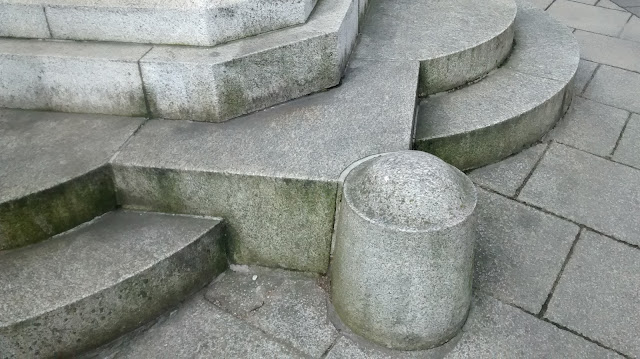Take this corner of a monument, for example. At first glance it looks very complex, but it can be summarised into different kinds of primitives, with only minor tweaks to a few of them.
This is a visual representation of what the shape could be, using just three different types of primitives. Red shapes are cubes, green being cylinders whilst blue are spheres. At this point in time, there is no need to worry about combining these and, as stated before, it doesn't matter that they clip into each other as physics does not apply in this situation.
This is the final result. In order to get some of the other shapes such as the flattened part on the top-most cube, I used the bevel tool. I scaled down some of the cylinders for the stairs to get a more accurate shape, but you can still see, in essence, the shape of each primitive put together to form a cohesive object. Learning this skill is invaluable to create accurate and well-built models quickly and efficiently, and practicing by drawing over images you have can help.



No comments:
Post a Comment